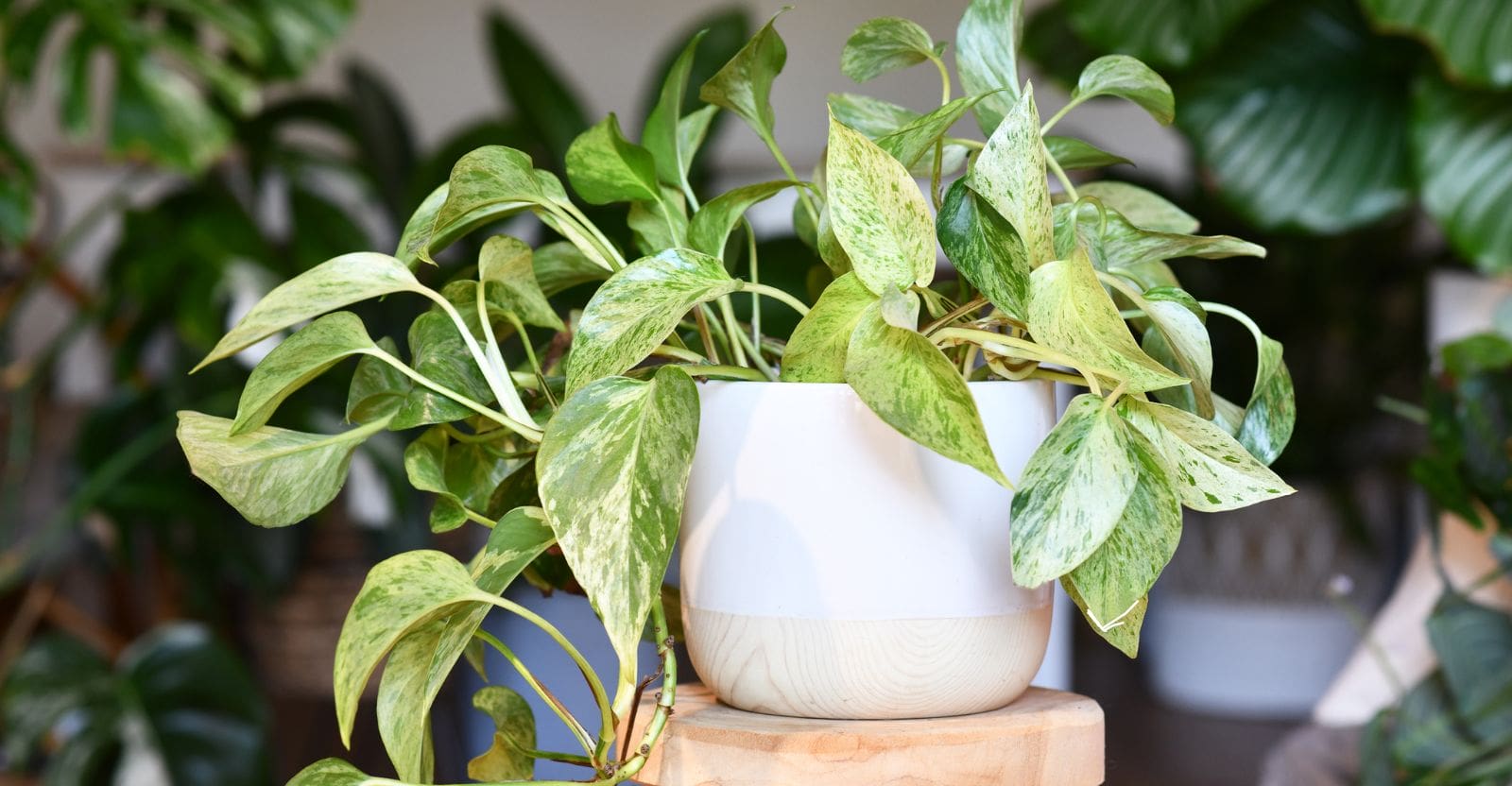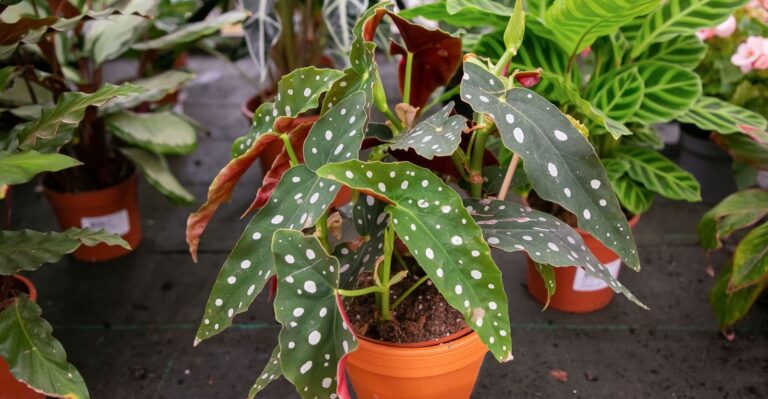Amazon has put together some great Home Gift Deals – save money and get your shopping done at the comfort of your home! Click here to see deals on Amazon
Pothos is a trendy variegated plant used in hanging baskets for the patio, vines climbing on totem poles for commercial office, or growing in a small pot for a dish garden.
There are several varieties of pothos that are grown all over the world. The Snow Queen pothos and Golden pothos are some of the most popular variety of pothos families.
It has intense white variegation on leaves against a deep green background. It’s easy to grow and flourish in unfavorable conditions. Let’s find out how you can grow and care for it, including some common problems you may encounter and how to fix them.
Snow Queen Pothos
Pothos is an inexpensive indoor and outdoor plant that is easy to care for. It’s an excellent ground cover plant that grows best in USDA zone 10 and 11. Snow Queen Pothos prefers a relatively warm climate and grows up to 2 meters long.
What is Snow Queen Pothos?
It’s an attractive indoor vine plant with bright green leaves and a white marveling texture. You can plant it in an overhead basket or a container and place it in a living room or dining table.
This plant is known for its air-purifying quality, and broad heart-shaped leaves help maintain fresh indoor air. You can also plant it outdoor as a ground covering.
It’s a vine-variegated type plant and spreads at a medium pace without being invasive. You can grow it along a trellis or climb it on the wall or other plants. With a little support and some care, it can make your home look natural and beautiful.
| Factor | Growth Condition |
|---|---|
| Soil | Well-drained soil with moisture |
| Water | Light water once a week |
| Sunlight | Partial sunlight |
| Temperature | 65 degrees to 85-degree F |
| Fertilizer | Light fertilization |
| Propagation | Stem cutting |
| USDA Zone | Zones 10 to 11 |

What is the difference between the snow queen and marble queen pothos?
The main difference between snow queen and marble queen pothos is the variegation pattern on the leaves. Snow Queen has primarily white leaves with a subtle splash of green texture.
Here is the snow queen vs marble queen pothos difference:
| Pothos Snow Queen | Marble Queen |
|---|---|
| White and Green variegation pattern on leaves | Creamy white and light green variegation pattern on leaves |
| Translucent leaves with a slightly waxy feel | Opaque heart-shaped leaves with a glossy sheen |
| Highly variegated foliage with deeper green color | Variegated foliage with more creamy-white color |
| Fast growth rate | Grows very slow |
| The plant looks whiter than green | The plant looks greener than white |
How big snow queen and marble queen pothos grow?
Both plants belong to the Epipremnum aureum species, which is known for its slow growth rate. It takes a while for them to get mature to be able to climb.
Snow queen grows a bit longer than marble queen pothos. In a suitable environment, it grows up to 1.5 to 2 meters long. Marble queen plants usually grow less than 1.5 meters long.
If you’re using them as a hanging plant, you have to prune them regularly to maintain the proper shape and encourage healthy foliage growth.
How to propagate snow queen pothos?
The easiest way to propagate is through stem cutting. For the best results, you should choose to cut from a healthy plant. Before you begin, sanitize your cutting tool to prevent the transfer of pathogens from the knife or pruner to the plant.
You can use a sharp pruner or trimming scissor and wipe the blade with rubbing alcohol or hold it over the flame for several seconds before each cut.
Step 1: Choose a strong shoot and cut it half-inch below a node to get a shoot that’s four to six-inch-long with several sets of leaves.
Step 2: (optional but recommended): Dip the end of each cutting in rooting hormone powder to kick-start the growth of meristematic tissue inside the pothos stem or petiole. We found Miracle-Grow FastRooting hormone to be effective on pothos.
Step 3: Put the cutting into a bowl filled with fresh water and place it where it can get indirect light. Don’t place it in direct sunlight as it will scorch the leaves and dry the rooting medium too quickly.
Step 4: You will see pothos roots start growing in three to four days and become ready to transplant. You can transplant it in either a container or plant it outdoor. Use a small container as pothos prefer crowded roots.
You should plant it in soil free from weeds. Ensure potting soil contains healthy organic compost, perlite, peat moss, and other nutrients. It provides a favorable growing environment to plant.
You can prepare several cuttings and plant them in smaller pots. It makes it easy to maintain, and you can quickly notice any problem with the new plant.
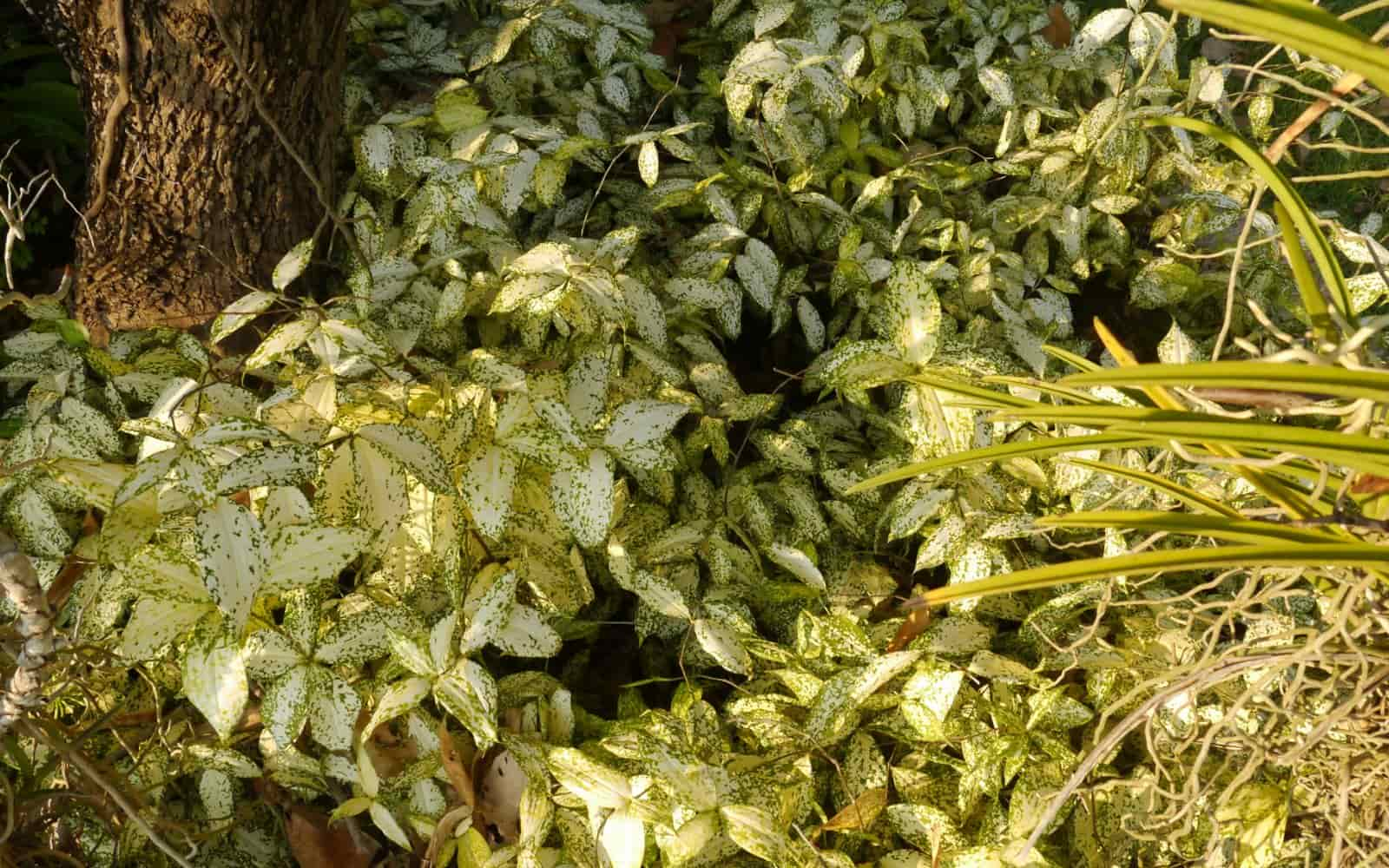
How to care for pothos
Now that you have planted pothos in a container or outdoor, it’s time to take care of them to let them grow to their fullest. Like most plants, they need the basics: the right nutrients and water.
Soil
Pothos prefer well-drained nutrient-rich, moist soil with a pH of 6.1 to 6.5. You can add peat moss, perlite, and organic fertilizer to the potting mix to create a healthy growth foundation.
If you’re planting snow queen in a container, make sure that you loosen up the soil three feet wide and two feet down. It keeps the plant stable and ensures the roots can grow deeper in the ground.
Does pothos grow faster in water or soil?
Pothos grow faster in the soil as they can get all the required nutrients and moisture needed to grow healthy and strong. You can use water to let it start the propagation, but the growth will be limited.
Soil is the foundation upon which all plants grow. Healthy soil encourages the fast-growing of snow queen types of pothos and gets strong foliage and healthy leaves. Also, ensure that you’re placing it in a container that allows the excess water to drain.
Do pothos like coffee grounds?
The coffee ground is a natural fertilizing agent, and many gardeners prefer to use it in their garden plants. You can add coffee grounds to pothos. It makes the soil rich in nitrogen and slightly changes the pH level toward more acidic, which pothos like.
You can add coffee grounds directly into the soil as fertilizer that gradually decomposes and provides natural fertilization to pothos. You can also pour grounded unwashed coffee or even coffee leftovers into the pothos container that helps it grow.
Water
Snow queen requires less water. You can water it as needed, for example, when you see the first quarter inch of the soil starts to get dry. Usually, if you’re planting it indoors, lightly watering it once a week should be enough.
Many people make the mistake of overwatering their pothos that causes root rot and kills the plant. This is why we don’t recommend you to make any watering schedule but keep an eye and when you see the top layer of soil start to get dry, lightly water it, often one time a week.
You should also use a plant pot with drainage holes that allow the excess water to be drained from the bottom that prevents root rot or fungus growth.
Should I mist my pothos?
Pothos is a tropical plant that likes humid conditions for growth. Misting helps clean the leaves from dust, improving the leaves’ efficiency to convert light into food and supplement the watering.
But you shouldn’t rely on misting alone and provide pothos with sufficient water and sunlight to grow healthy. You can mist pothos lightly once every 10 to 14 days. Also, be careful while misting, and don’t let leaves drench with water to prevent the risk of growing fungus.
You should regularly check the humidity levels and indoor temperature. Try to create a humid environment by using an indoor humidifier or grouping plants together.
How long can you keep pothos in the water?
Pothos is a very sturdy plant and can be grown in water alone. Many people use it in their aquarium with great success.
Remember that pothos left in water alone will grow slower than the ones planted in soil. With proper care, you can keep pothos in water for several years.
Ensure that you have nutrient-rich water and a suitable growing environment. You also have to replace water to circulate oxygen and other nutrients.
Also, don’t ignore the growth of algae or fungus in the water vessel that could damage the pothos. Keeping the water container clean helps pothos last long.
Fertilizer
Queen pothos plants are self-sustained plants that don’t need extra nutrients. You may apply little fertilizer when taking care of it. But if you see your plant struggling and not growing at a recommended pace, you can provide it with some houseplant fertilizer to help the growth.
When choosing a fertilizer, you can pick slow-release option nutrient fertilizer or organic fertilizers such as worm castings or seaweed solutions. It helps with the growth of roots and keeps the plant healthy.
Sunlight
Pothos needs partial light, and this is why it makes a great indoor plant. It’s a very adaptable plant and can tolerate medium to low indirect light requirements. When you’re growing it outdoor, you should plant it in the shade or partial sunlight location.
Can pothos be in direct sunlight?
You should avoid placing it in direct sunlight as it affects the growth and causes the leaves to start turning yellow or brown.
However, you should also not keep it in low light conditions. Otherwise, it will lose its variegation and become greener to compensate for light and make food for itself.
Temperature
Pothos grows best in moderate average room temperatures. When you’re planting indoors, maintain temperature ranges from 70 – 90 degrees F.
Pothos don’t like temperature fluctuations much. So, avoid placing them near the heater or hot airflow.
Can pothos live outside in winter?
Pothos is a tropical plant and survives well as long as the temperature doesn’t fall below 50 degrees F. Lower temperature causes the pothos leaves to turn brown and die.
If you live where the temperature falls below 50 degrees F, you should plant it in a container to move inside when required. Before you move outdoor plants to indoor, check for any pests on the plant and soil.
Pruning
Pruning your pothos helps in growing a proper shape and allows foliage to become healthy. Pruning also creates the bushy appearance of pothos that makes it look beautiful.
You can always prune any dead or damaged leaves and vines from pothos. When you trim plants, it encourages new growth. You should also be careful not to prune excessively. Ensure that each vine has a couple of leaves left; otherwise, it won’t regrow.
Snow Queen care, problems, and solutions
Snow Queen is a robust plant that doesn’t get infected easily. But you should keep an eye on some common diseases and yellowing leaves for adequate plant care and maintenance.
Bacterial Wilt
Bacterial wilt disease usually happens during the propagation. If the node gets infected, it fails to root and loses the propagation ability.
The bacterial wilt issue causes the leaves to wilt while veins inside the leaves turn black. These bacteria travel through irrigation water and infect through root hairs, and cut to the plant.
To prevent the spread, you should remove the water and discard it safely.
How do I know if my pothos has root rot?
Root rot is widespread among pothos that risks spreading to other plants if not treated on time. A pothos with root rot has dark brown leaves that look decaying on the plant.
Phytophthora root rot is prevalent among pothos that gets imported during propagative cutting. This is why you need to keep pruning tools sterile to prevent infections.

It causes pothos white and green leaves to turn into dark brown to black. The stems and leaves’ veins don’t blacken due to infection.
The best treatment is to remove the diseased part and properly discard it. You can treat the remaining plants with a fungicide to control the spread.
Why is my snow queen pothos turning brown?
If you find the leaves to be turning brown, the most common reason is root rot. Root rot happens when you frequently water the plant or get infected by rotting root fungus.
For example, Rhizoctonia root rot often causes leaves to start appearing in black and brown spots. If you look closer, you will see the visible strands of fungi. You should reduce the watering frequency and allow the plant soil to get dry.
Identify the infected plant that should be trimmed, bagged, and discarded. You can also apply a fungicide such as Triflumizole (Terragard) or thiophanate-methyl (Clearlys 3336) to treat an infected area.
How do you tell if pothos is dying?
You can tell if pothos is dying by looking at the overall plant health. A dying pothos has dark brown or yellowish leaves that cause the leaves to fall off. You may also find stunted growth with unhealthy-looking soil.
If that happens, you shouldn’t despair and try to identify the cause. The most common reasons are frequent watering, lack of nutrients, unhealthy soil, and pest infestation such as mealybugs.
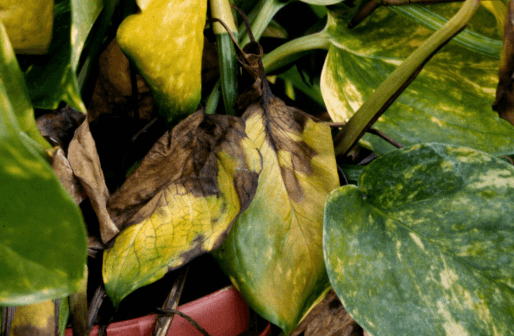
You should choose a pot with a drainage hole at the bottom to let drain the excess water. Check the soil salinity and ensure there is no fungal growth in the soil. Testing toil pH levels and amending the soil also bring back new life to the dying pothos.
Is snow queen pothos toxic to the animal?
Pothos is toxic to animals and humans. You should keep it away from your pets and don’t let them chew on the leaves. If ingested, it causes vomiting, diarrhea, irritation, and difficulty swallowing.
You should immediately see a veterinarian if you find your pet has ingested pothos toxins.
Where to buy snow queen pothos?
Snow queen is famous in North America due to its easy growth, hardiness, and visual appeal. You can determine its popularity as pothos has been consistently ranked among the top wholesale production plant in Florida.
You can buy snow queen from garden centers and home gardening shops. During the summer seasons, retailers such as Walmart, Home Depot, and Lowes carry these plants in their gardening section.
You may have limited options or limited plants in stock when buying it through brick-and-mortar stores. If you can’t find these plants in the store, you can always order them from Amazon or several other online retailers for a price starting at $10.
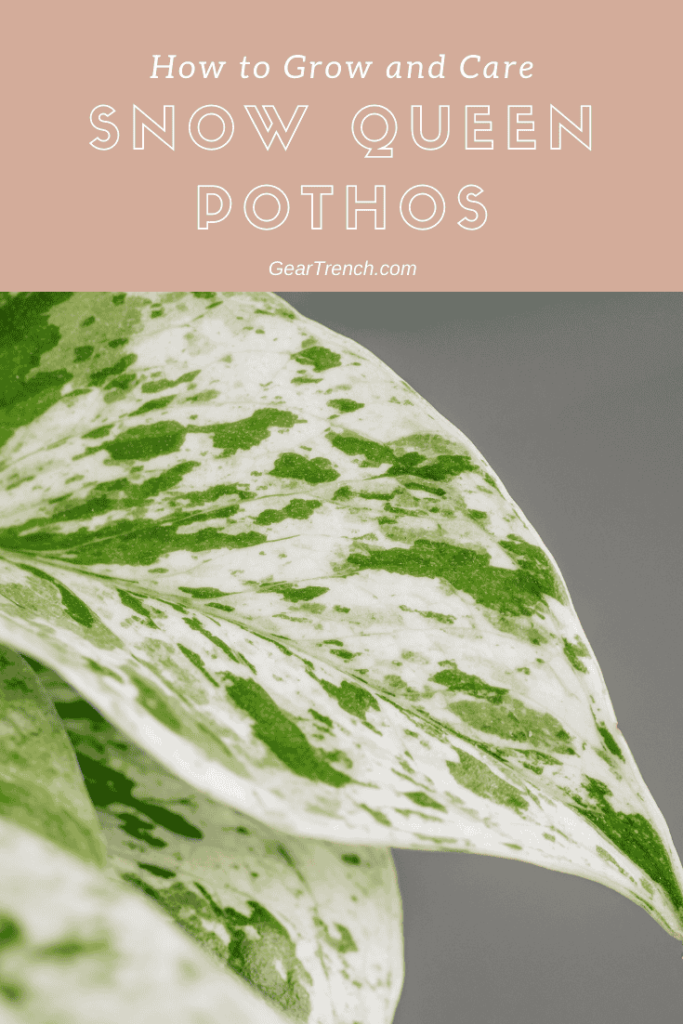
Don’t forget to share this post

